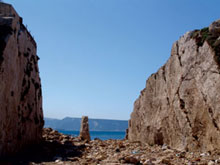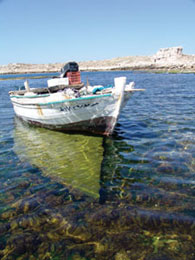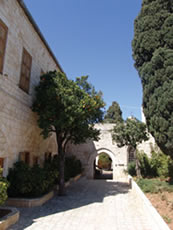|
|
 History
History |
Historical Timeline |
|
Surveys conducted in the region of Enfe have uncovered
prehistoric stone tools dating back to the Middle
Paleolithic era (100,000-35,000 B.C.). However, no evidence
has been found to indicate the presence of an actual human
settlement in the region dating to the Neolithic period.
The first written evidence mentioning Enfe is the Amarna
letters (mid-2nd millennium B.C.), which were sent by the
governors of the coastal Canaanite cities to the Pharaohs of
Egypt asking for help in repelling Amorite intruders (nomad
tribes originating from the middle Euphrates region in the
North). Letters written by Rib Addi, the King of Byblos,
specifically mention the Canaanite city of Enfe (called
“Ampi” in the letters) and state that Enfe, after being
occupied by the Amorites, fought with the Amorites against
Byblos. |
 |
|
 |
Enfe was conquered by the Assyrian army in the 7th
century B.C., when it was known as “Anpa.”
Classical archaeological evidence discovered in Enfe,
including tombs containing pottery and coins,
indicates that the city was inhabited during the
Greek, Roman, and Byzantine eras. However, there is
not enough evidence to determine the size or
importance of Enfe during the Classical period. Other
interesting archaeological remains from this era
include many caves, oil presses, and vats dug into the
bedrock near the shore, as well as a funerary cave
near the Church of Saint Catherine.
Enfe entered its glory days during the Medieval era,
and most of the archaeological and historical
monuments that can be seen today date from this
period. Around the 13th century, Enfe was a small,
fortified village surrounded by fertile fields, and it
was famous for its wine production. It was one of the
lordships of the county of Tripoli, governed by French
provincial nobles from the Renoir family. The French
Lord was eventually chased out of Enfe by the Prince
of Antioch Bohemond IV, the Lord of Beirut, and the
Genoese, and he took refuge in Cyprus. |
|
|
In 1282, Enfe was part of one of the greatest plots
that marked the end of the Crusades. The Lord of
Byblos, the Genoese, and the Knights of the Temple (a
secret brotherhood established during the Crusades)
rose up against the Count of Tripoli Bohemond VII, but
they were brutally crushed. Bohemond VII punished the
Genoese by blinding them, and he buried alive the Lord
of Byblos and his family in the Fort of Enfe.
By the end of the 13th century, Tripoli and Enfe were
invaded and destroyed by the Mamluke army. Enfe was
completely forgotten, and the stones of its ruined
buildings were used as building blocks for newer
houses. After this time, travellers’ accounts mention
Enfe as a ruined and empty city on the road between
Batroun and Tripoli. |
 |
|
|
Enfe regained some
of its previous importance during the 17th and 18th
centuries, when the Church of Saint Catherine was restored
by the local inhabitants, and a new church dedicated to
Saint Simeon and the Archangel Gabriel was built next door.
|
|
The Abbey of Balamand
The Abbey of Balamand was built on a promontory 200m
above sea level, southeast of Tripoli. It was named
“the beautiful mound” (Bel Mont in French) by the
Crusaders, due to its location on top of a hill
dominating the sea and the adjacent valleys, as well
as its view overlooking most of the northern
coastline.
Built by Cistercian Monks during the Crusader period,
the Abbey was inhabited from 1157 to 1289, when the
county of Tripoli fell to the Mamlukes. The Abbey was
then abandoned, and it remained in ruins until the
beginning of the 17th century, when Greek Orthodox
monks restored it. Since that time, many modifications
have been made to the architecture of the Abbey, and
many rooms and halls were added. This Abbey was also a
seasonal residence of the Greek Orthodox Patriarch of
Antioch and the East.
|
 |
Visiting the
Abbey
Like all other Cistercian abbeys, the Balamand Abbey has an
architectural plan built around a central courtyard
surrounded by a portico. The different parts of the Abbey
are structured around this courtyard, including the dining
hall and kitchens to the south, the meeting hall to the
east, and the church and the warehouses to the west.
|
|
|
|
|
|
|
|
|
|
|
|
|